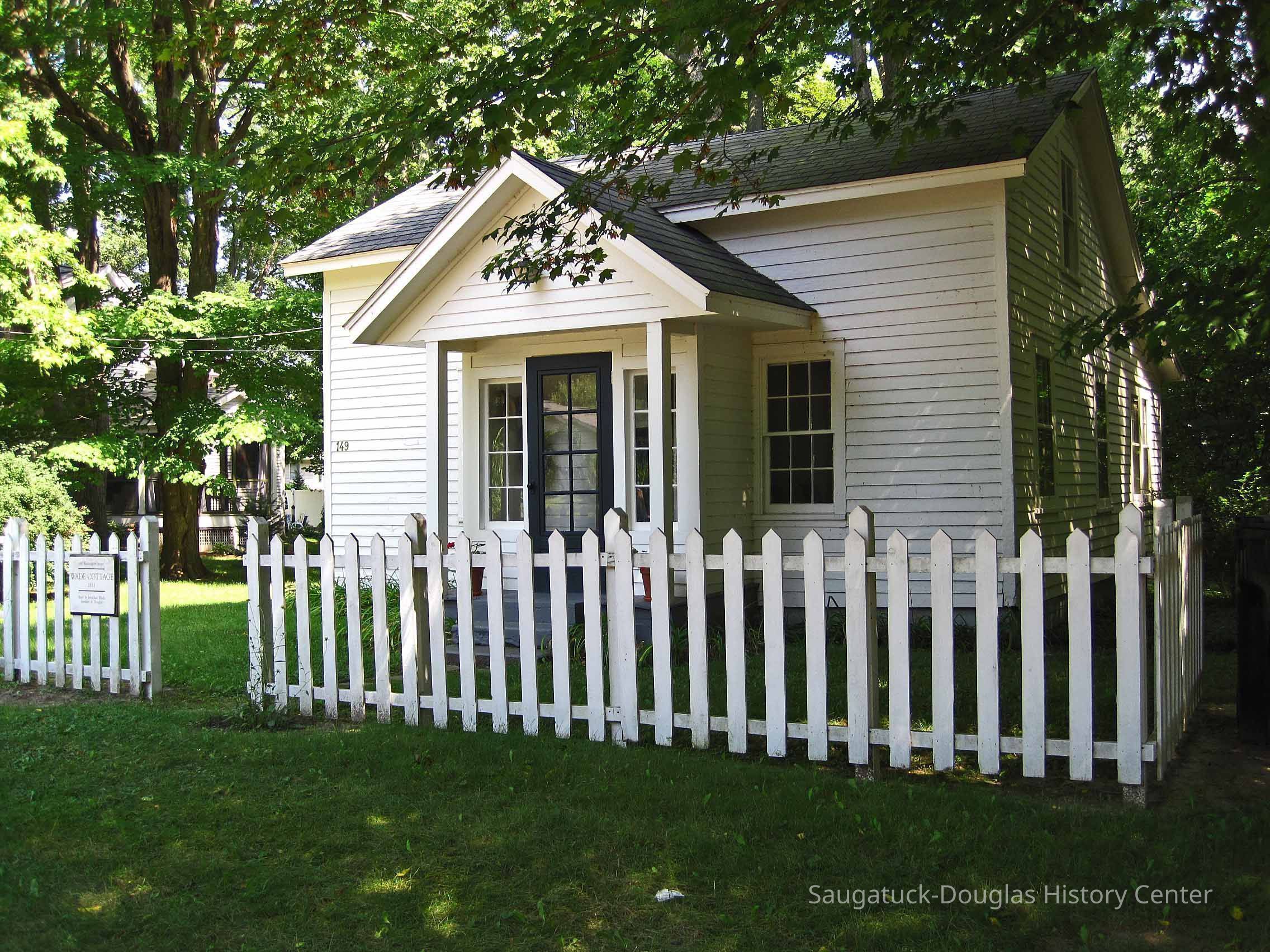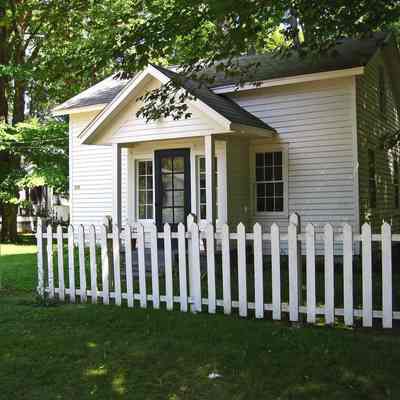Name/Title
Wade Cottage 1851 at 149 WashingtonEntry/Object ID
2023.50.100Scope and Content
Photos and text from SDHS newsletter insert page article (pg. 302) about the Jonathan Wade House of 1851 which is located at 149 Washington Street, Douglas. (This is not the Wade-Bradley house at 26 Wall St.)Context
[A regent interesting house discovery is that of what appears to be the first house in Douglas-built by one of the founders of Douglas, Jonathan Wade a decade before the Civil War. This tiny house, at 149 Washington Street (at South Street), is not only the first (and oldest) house in Douglas, it is the only known 'plank' house.]
By most accounts, Jonathan Wade and family were the first white settlers in Douglas. He came to Michigan from Canada by way of Boston in 1835-settling first in Singapore (the early Saugatuck port town) where he was part owner of Singapore's first lumber mill. He lost his investment there when the mill failed and then was destroyed by fire in 1846, but by he 1851 was able to purchase much of the land [section 16] which eventually became known as Douglas. Here he built the village's first lumber mill and a house in 1851-followed by a boarding house for the mill hands, and hotel. The mill was located at what is the Point Pleasant Marina, and eventually evolved into the famous Douglas Basket Factory. The Wade's hotel, built in 1860 (destroyed by fire in 1934) was also on Washington Street (facing Center Street), and Wade platted out a village on the land south of Center Street in 1860.[1]
Still standing and little changed, "Wade Cottage" is the first house in Douglas. It is a traditional two rooms-up-two-rooms-down house. The main room was probably the living (including kitchen) room, with the second room on the first floor a sleeping room. Two small and low bedrooms are up a narrow stairway. A lean-to kitchen and dining room were added later to the rear. The house is similar in form to the Settler's House in nearby Holland.
The house is of "plank" construction-huge sawn boards placed side-by-side (vertically) which, along with heavy beams in a "braced frame" manner, carry the load of the house. This plank form of construction appears to be common in the early pioneer era, and may have been copied from local Native American house-building practice. It is most probable that the planks were milled by the primitive "upright saw" at Mr. Wade's mill at the opposite end of this street. Clapboard siding and new windows were added later, probably just before the Civil War--diving the house a somewhat stylish Greek Revival manner. Some of the planks are observable inside the house. The original wide-plank flooring has been covered by a newer wood floor.
A number of Wade's family members moved to this little settlement from Canada-the village named "Dudleyville" after Jonathan's brother Dudley; the home (1853) of his brother Nelson still stands on Wall Street (Rick Bradley's house). At one time people in Saugatuck jokingly referred to Wade's community as "Canada." The village was renamed Douglas in 1870. Wade appears to have had operated a large farm and orchard to the immediate south of this Washington Street house, and, owned a brick factory on Wiley Road. In 1863 the Wades owned 75 hogs. It is believed that the Wades moved from this tiny house to a large new house and farm on Water Street across the ravine/Tannery Creek to the immediate south of this house in about 1867. It appears that he died shortly thereafter.
The house passed through several owners, including (in 1891) the Douglas postmaster and druggist, Henry Bird, Jr. Its most recent owner was Carl Ellstam, a retired circus acrobat and Chicago postal worker. The house is being repaired by its new owners.
Footnote:
1 Henry Hutchins, "Recollections of the Pioneers of Western Allegan County" (1919,1976,1995), 9, 12, 21; The first settlement activity in Douglas was land clearing for farming, undertaken by Robert A. McDonald, William Scovill, and Michael B. Spencer, although it appears that none of them lived on this south side of the Kalamazoo until later. See Kit Lane, "Douglas. Village of Friendliness" (1987), page 1. Wade's house in Singapore was destroyed by fire in 1848, and two years later the family moved to "the flats" [Saugatuck] for a year before moving to Douglas. [May Heath, "Early Memories of Saugatuck" (1953) 218.]Collection
SDHS NL Inserts, Buildings: Homes, cottages and private residences, 1830 Settlement, pioneer eraCataloged By
Winthers, SallyAcquisition
Accession
2023.50Acquisition Method
Found in CollectionNotes
SDHS Newsletter insert page 301Location
* Untyped Location
Digital data in CatalogItRelationships
Related Person or Organization
Person or Organization
149 S Washington/Wade Cottage 1841, Wade, Jonathan 1808-1868General Notes
Note
This information was OCR text scanned from SDHS newsletter supplements. Binders of original paper copies are in the SDHC reference library.Create Date
January 5, 2024Update Date
January 5, 2024
